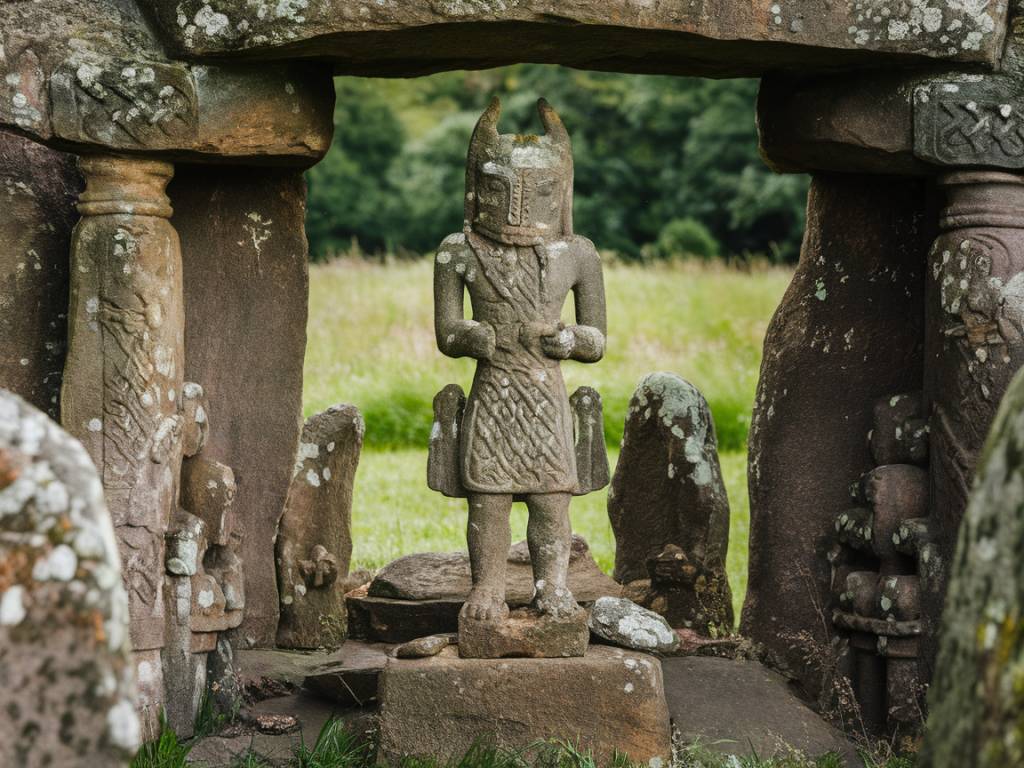For centuries, the shadows of misty Welsh hills have been adorned with whispers of ancient Celtic rituals. These traditions, deeply interwoven with the rhythms of the land and the people, continue to intrigue historians and cultural enthusiasts alike. But what were these rituals? How did they shape the identity of early Celtic societies in Wales? Today, we’ll journey back through time to uncover the rich tapestry of ancient Celtic practices and their lasting impact on Welsh culture.
Ancient Celts and Their Spiritual Connection to the Land
The Celts were deeply attuned to the natural world. For them, the land wasn’t just a place to live—it was alive, sacred, and brimming with mystical energy. From dramatic mountain ranges to lush verdant valleys, every landscape held significance. Holy wells, craggy hills, and ancient trees often became focal points for rituals and ceremonies.
In Wales, certain sites became renowned for their spiritual importance. Take, for instance, the breathtaking standing stones of Bryn Cader Faner or the sacred geometry of Barclodiad y Gawres, a Neolithic burial chamber adorned with intricate carvings. These ancient sites weren’t mere monuments; they were gateways to a world where the spiritual and physical realms intertwined.
Seasonal Festivals: The Wheel of the Celtic Year
Celtic life was paced by seasonal rhythms, guided by what we now call the « Wheel of the Year. » Each season was celebrated with vibrant festivals that connected communities to the cycles of nature. These celebrations weren’t just about marking the passage of time; they were about renewal, reverence, and survival.
- Samhain: The original « Halloween, » Samhain marked the end of the harvest and the beginning of winter. It was believed to be a time when the veil between the living and dead was at its thinnest, leading to customs such as lighting fires to guide spirits and protect the community.
- Imbolc: Celebrated in early February, this festival honored Brigid, the goddess of fertility and poetry. It was a hopeful time, symbolizing the first stirrings of spring and the return of life to the barren earth.
- Beltane: A celebration of fertility and abundance, Beltane was marked with bonfires and festivities. This joyful event saw communities igniting flames on hilltops to honor the sun’s growing power.
- Lughnasadh: Named after the god Lugh, this early August festival celebrated the beginning of the harvest season. Feasts, games, and communal gratitude were central to Lughnasadh celebrations.
The Druids: Keepers of Celtic Knowledge
No exploration of Celtic rituals is complete without mentioning the Druids. These enigmatic figures acted as philosophers, judges, teachers, and spiritual guides within Celtic culture. They carried oral histories, practiced divination, and facilitated interaction with the divine.
In Wales, Druids played a significant role in mediating life’s events—be it marriage rituals, seasonal festivals, or decision-making processes. Though much of their wisdom is shrouded in mystery, their presence echoes in the lore and traditions that survive today. Sites such as Anglesey’s Ynys Llanddwyn are said to have ties to these ancient scholars and their sacred gatherings.
Ritual Foods and the Role of Feasting
Food played a central role in Celtic rituals, not only as sustenance but as a symbol of abundance, gratitude, and connection. Feasts were opportunities for the community to bond, honor the gods, and celebrate the cycles of life.
Many rituals featured symbolic foods. For example, during Samhain, people would bake « soul cakes » to honor the spirits of their ancestors. At Beltane, fresh dairy products symbolized fertility and were shared among participants. This emphasis on communal consumption of seasonal foods laid the groundwork for many Welsh culinary traditions we recognize today, such as the love of hearty stews, cheeses, and celebration feasts.
Inheritance of Celtic Rituals in Modern Traditions
While we may no longer gather under the moonlight to chant invocations to the gods, echoes of Celtic rituals still linger in Welsh culture. Modern festivities like Calan Gaeaf (a uniquely Welsh take on Halloween) and Calan Mai (May Day celebrations) have deep roots in these ancient traditions. Similarly, rural customs like wassailing—blessing the apple orchards—carry remnants of pagan practices.
Even the modern mindfulness-inspired reconnection with nature can be seen through a Celtic lens. The ancient Celts had a profound understanding of how the environment shapes human life. So, whether we’re walking a forested path or pausing by an ancient stone circle, we’re unknowingly partaking in their timeless reverence for the earth.
The Mystical Allure of Celtic Landscapes
To walk through Wales today is to step into a land steeped in Celtic lore. From the windswept peaks of Snowdonia to the mysterious woods of Brecon Beacons, the landscape itself seems to hum with stories of the past.
One such legend, tied to sacred rituals, is that of Cerridwen’s cauldron. In Welsh mythology, this magical artifact had the power to grant inspiration and wisdom. It’s said to reside in the depths of Llyn Tegid (Bala Lake), adding a mystical air to an already enchanting place. Such stories demonstrate how landscape and mythology are intricately bound in the Celtic worldview.
Why Celtic Rituals Still Fascinate Us
The enduring fascination with ancient Celtic rituals likely stems from their mystery and their deep harmony with nature. In a fast-paced, modern world, there’s something profoundly grounding about reconnecting with traditions that prioritize community, seasonal awareness, and spiritual balance.
Perhaps that’s why people continue to visit ancient sites, celebrate seasonal festivals, and even incorporate Celtic-inspired practices into contemporary life. It’s a way of keeping these timeless traditions alive while honoring the rich cultural heritage they represent.
So, whether you’re sipping a cup of steaming Welsh cawl under a twilight sky or wandering through the storied landscapes of Wales, take a moment to reflect on the Celts who roamed these lands and the rituals that infused their lives with meaning. Who knows? You may just feel the whispers of an ancient world echoing through the wind.

